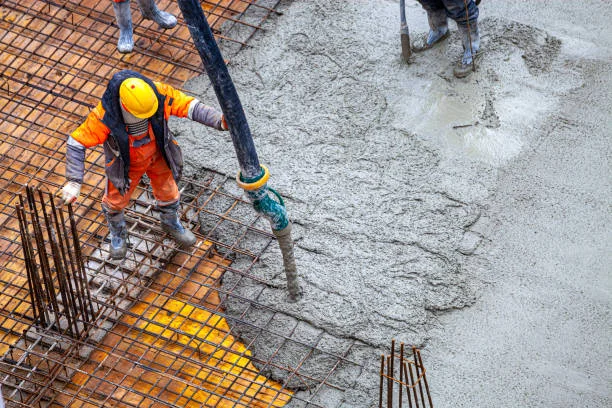Accuracy and speed in Concrete estimating have become the deciding factors between winning or losing a project. Gone are the days when concrete estimators spent long hours manually calculating volumes, areas, and reinforcement quantities. In 2025, the focus has shifted to AI-based automation, real-time collaboration, and spot-on accuracy.
Concrete estimating has never been more advanced—or more competitive. Contractors are under constant pressure to deliver faster, more precise bids while keeping costs under control. Fortunately, a new generation of concrete estimating software is changing the game. Let’s explore how modern tools are reshaping the estimating landscape and which ones are helping contractors stay ahead.
- PlanSwift
For many estimators, PlanSwift has been a trusted name for years. It allows users to measure concrete volumes, foundations, and slabs directly on digital drawings. The software is straightforward, integrates well with Excel, and can be tailored to match a company’s workflow.
What makes it still relevant in 2025 is the ability to adapt. Estimators can use custom formulas and plugins to handle more complex projects. It’s a good fit for contractors who prefer a mix of manual control and digital support in their takeoff process.
- Beam AI
Among latest AI tools, Beam AI stands out for how naturally it fits into an estimator’s daily routine. Instead of replacing the estimator’s role, it simplifies the most time-consuming part — the takeoff.
In practice, here’s how most contractors use Beam AI: they upload their project drawings, and within hours, the software identifies and measures all key concrete elements — slabs, beams, walls, footings, and columns. The quantities are then reviewed by a quality assurance team before being shared back with the estimator.
The result is a complete, verified concrete quantity takeoff that’s ready to be priced — often delivered within 24–72 hours. Most teams report saving up to 90% of their time compared to manual takeoffs, allowing them to focus on cost analysis, scope planning, and bid strategy.
What’s particularly appreciated about Beam AI is its consistency. Estimators know that when they receive the data, it’s organized, clean, and quality checked. That reliability means fewer revisions, fewer missed details, and faster turnaround when deadlines are tight.
Contractors who handle multiple trades find it especially useful since Beam AI supports various trades — not just concrete, but also drywall, electrical, plumbing, and more. In 2025, many general contractors and subcontractors are using Beam AI as part of their regular estimating process to submit more bids without adding more staff.
In short, Beam AI bridges the gap between traditional takeoffs and modern efficiency — keeping estimators in control, but cutting out the hours of repetitive measurement work.
- STACK
STACK remains a strong option for teams that need to collaborate across different locations. The platform lets estimators perform quantity takeoffs and create cost estimates from any device. It’s entirely cloud-based, so teams can review drawings, share notes, and make adjustments in real time.
For concrete estimating, STACK allows users to measure areas, volumes, and linear footage easily. The built-in cost database helps link takeoffs directly with pricing, which saves time when preparing final bids.
- Bluebeam Revu
Although Bluebeam Revu is primarily known for its document management features, it’s also a capable tool for quantity takeoffs. Estimators can use it to mark up plans, measure areas, and manage project layers. It’s especially useful for teams that handle large sets of PDF drawings and need accurate, organized data.
Many firms pair Bluebeam with their main estimating software to streamline documentation and ensure that markups align with quantity reports.
- ProEst
ProEst offers a full estimating environment where teams can manage takeoffs, cost data, and bid tracking all in one place. Its concrete estimating features allow detailed analysis of labor, materials, and production rates.
ProEst is especially suited for mid-sized to large firms that want to combine their estimating and project management efforts. The ability to generate detailed cost summaries and reports helps decision-makers review bids with greater confidence.
Looking Ahead
As 2025 continues, construction companies are prioritizing speed and precision in every stage of preconstruction. The industry is moving away from guesswork and towards data-supported decisions. Whether through established tools like PlanSwift and STACK or newer platforms such as Beam AI, digital estimating is becoming a standard part of daily operations.
Concrete work will always depend on experience and on-site understanding, but the tools used to prepare bids have evolved. Modern estimating software allows contractors to stay competitive, save time, and focus more on building rather than measuring.
For those who still rely on traditional takeoffs, 2025 is the right time to make the shift. The companies embracing these tools today are the ones setting the pace for tomorrow’s projects.
One click away from more — uncover articles that expand your perspective.






